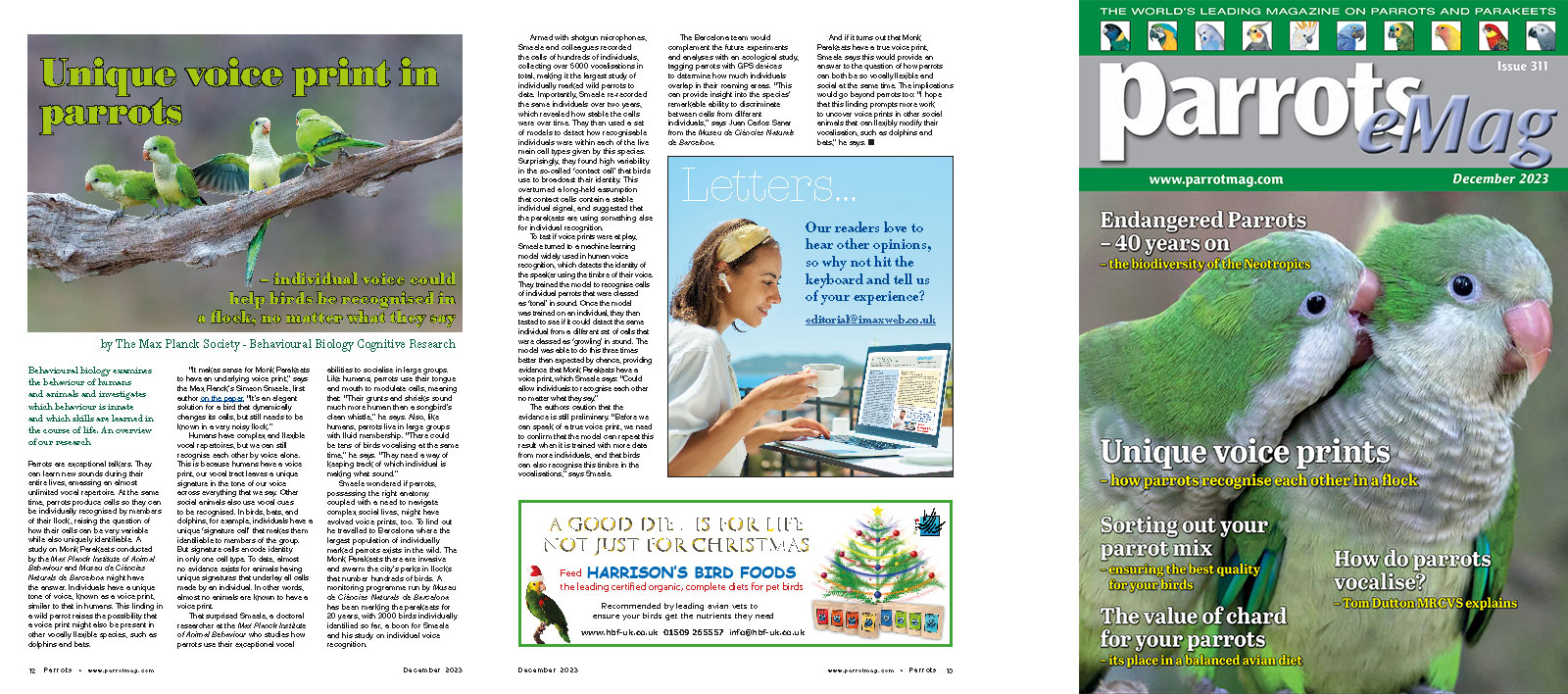
Individual voice could help birds be recognised in a flock, no matter what they say
By The Max Planck Society - Behavioural Biology Cognitive Research
Behavioural biology examines the behaviour of humans and animals and investigates which behaviour is innate and which skills are learned in the course of life. An overview
of our research.
Parrots are exceptional talkers. They can learn new sounds during their entire lives, amassing an almost unlimited vocal repertoire. At the same time, parrots produce calls so they can be individually recognised by members of their flock, raising the question of how their calls can be very variable while also uniquely identifiable. A study on Monk Parakeets conducted by the Max Planck Institute of Animal Behaviour and Museu de Ciències Naturals de Barcelona might have the answer. Individuals have a unique tone of voice, known as a voice print, similar to that in humans. This finding in a wild parrot raises the possibility that a voice print might also be present in other vocally flexible species, such as dolphins and bats.
“It makes sense for Monk Parakeets to have an underlying voice print,” says the Max Planck’s Simeon Smeele, first author on the paper. “It’s an elegant solution for a bird that dynamically changes its calls, but still needs to be known in a very noisy flock.”








Parrot Chat
Buyers Guides
Breeding articles